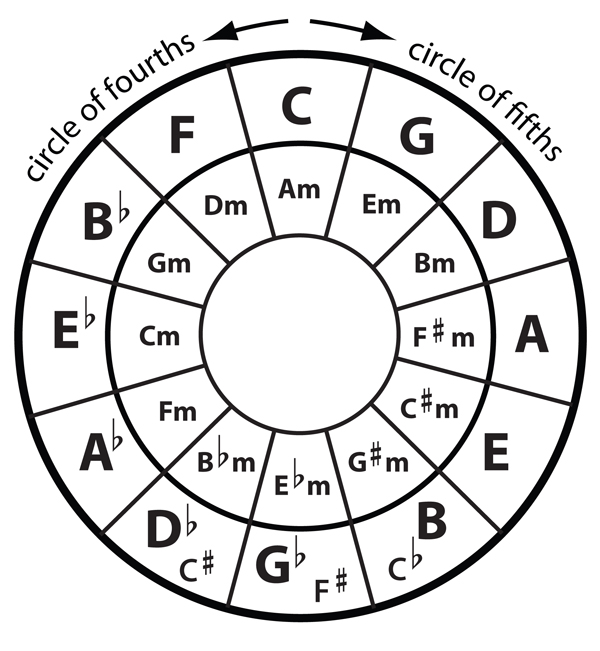

Modes in this time were replaced by the major and minor scales. From the 17th century until the 19th century, modes were not used as widely. In the middle ages, modes were used to organize the melodic and harmonic parts of music. Remember that sharps and flats affect names. To determine the name of a minor key, find the name of the key in major and then count backwards three half steps. Key signatures can specify major or minor keys. The key signature is the note a half step above that last sharp. To find the name of a key signature with sharps, look at the sharp farthest to the right. One flat is F, since you can't go to the next -to-last flat. This flat is on the line or space the key signature is named after. When confronted with a key signature that consists of flats, look at the flat second from the far right. There is a little trick to figuring out a key signature's name. In the middle is the number and position of the sharps or flats. On the inside are the corresponding minor key names. On the outside are the major key names, separated by fifths. To help understand and remember key signatures, a chart called the circle of fifths can be used. The arrangement of sharps and flats at the beginning of a piece of music is called a key signature. So, placing a sharp on line F makes every F sharp. Placing accidentals at the beginning of the music (as opposed to right beside a note) allows the accidentals to affect every note in the entire piece. Since some notes will always be sharp once transposed or in certain scales, it is sometimes helpful to place accidentals at the very beginning of a piece in order to modify all the notes of a certain pitch. All the notes of a piece can be modified in this way, by finding a note's counterpart in the modified scale. Thus, if you used the major scale pattern, but started at G, you would just have to count up according to the major scale pattern to transpose it. Rewriting the same scale pattern at a different pitch is called transposition. Scale patterns can be duplicated at any pitch. This, alternating creates the blues inflection. This scale contains flat thirds and sevenths which, alternate with normal thirds and sevenths. The blues scale is a chromatic variant of the major scale. Like the chromatic scale, it too has no tonic. A whole tone scale is comprised of whole steps. Because each pitch is equidistant, there is no tonic. The chromatic scale is a nondiatonic scale that consists of half steps only. Many nondiatonic scales have no identifiable tonic. Scales that do not follow the interval patterns of the diatonic or pentatonic scales are called nondiatonic scales. To get from one end of the scale to the other, they require gaps of more than a half step. Pentatonic scales, as their name suggests, have only five notes. The melodic minor scale, however, ascends with the modifications noted above, but descends in the natural minor scale. All the patterns to this point have been the same as one climbs and descends the scales.

In this scale, the sixth and seventh notes are each raised one half step. There is now an interval of one half step between the seventh and eighth notes, and one and a half steps between the sixth and seventh notes. This scale is the same as the natural minor scale, except the seventh step is raised a half step. There are half steps between the second and third and the fifth and sixth degrees whole steps exist between all other steps. These scales have seven different scale degrees. Likewise, if you know the pattern for any other scale, you can create them, too. By changing the first note, then using the pattern as a guide, you can construct any major scale. The pattern of whole and half steps is the same for all major scales. There are half steps between the third and fourth and seventh and eighth scale degrees whole steps exist between all other steps. The major scale consists of seven different pitches.

The seventh tone of the major, harmonic and melodic minor scales is called the leading tone if it is one half step lower than the tonic. The subtonic is the seventh note in the natural minor scale. The third is the mediant, halfway between the tonic and dominant.

The other notes in the scale also have names. Because of this, diatonic melodies often end on the diatonic note. It is the most 'stable' note, or rather the easiest to find. Diatonic scales are scales that include half and whole steps. Here is a list of all the topic on this page:Ī scale is a group of pitches (scale degrees) arranged in ascending order. Our Flash Keyboard can help your understanding of this area.


 0 kommentar(er)
0 kommentar(er)
